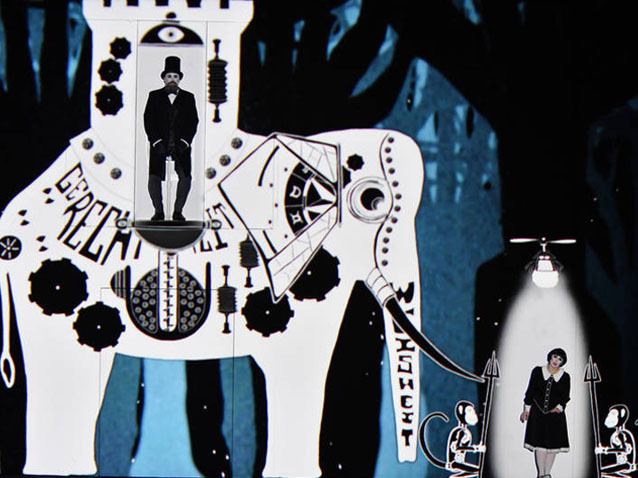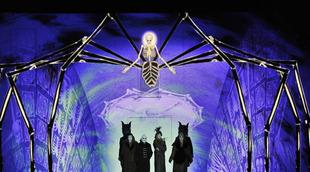 © DR
© DR
This Magic Flute’s extraordinary production coming from Berlin’s Komische Oper will remain without any doubt a milestone, a reference point in the long history of stagings of this great Mozartian title. The production, which was seen in Madrid this present season and is now visiting Barcelona after having toured with big success through many great theatres, stands out for its originality and pertinence of concept as well as for its powerful visual impact.
At last, The Magic Flute has been told as what it is, deep down: a tale, a pure and not at all simple tale (the greatest tales never are). It is a confusing and contradictory tale, with thousands of suggestions and windows to matters and subjects of crucial transcendence, but a tale at the end of the day.

Stage directed by Barrie Kosky and Suzanne Andrade, the production is articulated via the perfect, exact, pinpoint interaction between the singers and the imaginative and suggestive animations created by Paul Barritt. These are projected on a vertical stage that is also the screen into which the characters appear and disappear rapidly through gyrating panels. The rhythm is vertiginous and along with the confusion –delicious confusion, fruitful confusion, between real and virtual, possible and impossible, realistic and magical– they captivate the eye of the spectator. The multiplicity of layers of possible readings fluctuating between the cultured and the popular, which can both fascinate the sensitivity of a child and please the intelligence of the erudite and expert scholar, constitute one of the main merits of this production.
Visually, the most evident cultural referents of this proposal, but not the only ones, are some of the greatest characters of the silent movies. Papageno remits us to Buster Keaton, Sarastro to Doctor Caligari, Monostatos to Nosferatu, Pamina to Louise Brooks and the Queen of the Night to Tim Burton’s dangerous human spiders.
The omission of the spoken dialogues, with the texts being projected as in the old silent movies and accompanied by fragments of two Mozart’s piano Fantasies, might have irritated a few purists, but gives agility, fluidity and continuity to the performance.
Musically, the results were more than correct, they were good, although not excellent. However, for once, vocal excellence wasn’t the main goal and, instead, the perfect integration of performers and production was. In this sense, the members of Berlin’s Komische Oper worked at the highest level.
Allan Clayton was a good Tamino, he sang without great lyrical lines but with bravery and good projection. Maureen McKay was a good Pamina as well, although she started a little unsettled, but she redeemed herself in the second half with a great quality “Ach, ich fühl’s…” that she ended excellently. Olga Pudova had all the highest notes of the Queen of the Night, but was short of power and vocal aggressiveness. Something similar happened with Dominik Köninger’s Papageno, excellent, but he lacked some more vocal presence. Dimitry Ivashchenko was categorical and convincing as Sarastro and Peter Renz was sufficient as Monostatos, the most unpleasant tenor role in the Mozartian repertoire. Deliciously coquettish the Three Ladies, and sweet the Three Child-Spirits sung by children from the Tölzer Knabenchor.
The choir of the Liceu, which had to sing in uncomfortable locations in occasions due to the demands of the production, were correct. Good performance from the orchestra with details of great subtlety, especially in the woodwind section, despite of some breakage in the general sound at points. Good and sensitive musical direction from Henrik Násási, with light tempi that were very appropriate for the fluidity of the production.
Xavier Pujol
the 20 of July, 2016 | Print
Comments